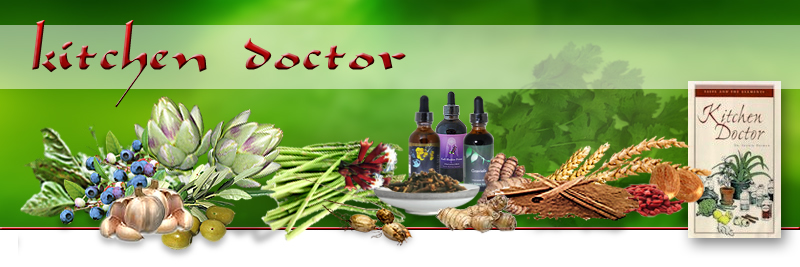
Ayurvedic
Parasitic Protocols
In India, where parasites are endemic, it is believed that people
with weaker digestions are more prone to parasitic infections.
Intestinal parasites thrive on undigested food. Eventually, the host suffers
from tissue weakness and degeneration. Not surprisingly, Ayurveda
uses hot spices both to stimulate digestion and destroy parasites.
Use of dairy products during parasite cleases is generally discouraged except in some circumstances where curd is mixed with powdered herbs.
Hot spices
are irritating to the membranes of parasites and thus make good parasiticides, but these are usually combined with carminatives to relieve gas and bitter herbs to reduce toxicity since some parasites release toxins into the host.
Spices
will, of course, stimulate peristalsis. They can also potentially aggravate the tendency
towards diarrhea, but diarrhea is one way the body uses to rid
itself of parasites. Black pepper and asafoetida (an intense
smelling spice that somewhat resembles garlic though
it comes from resin rather than a bulb) are often used to increase
what Ayurveda terms digestive fire. Cayenne, though
not native to India, is also used. Then, as with the Chinese, Ayurveda
employs bitter herbs, but not so much to stimulate the flow of
bile as to detoxify the body of poisons. Parasites dump ammonia
gas into the body. This disturbs many physiological processes as
well as pH.
Vidanga
Good Ayurvedic preparations address
several issues simultaneously: the need to destroy the parasites,
intestinal peristalsis and flora, and blood and liver detoxification.
 |
The cornerstone of all treatments is vidanga, Embelia
ribes, considered especially effective against tape worms.
Some sources indicate that vidanga is also effective
with pinworms and round worms. |
Vidanga, being pungent, raises pitta, or fire. As is understood
by those conversant with energetic medicine, an herb that raises
fire will be decongesting, so vidanga reduces kapha.
Because it is also carminative, it also reduces vata.
It is usually combined with ginger and applied to the skin for
treatment of ring worm and taken internally for other kinds of
parasitic infections. Most consider that it is safe to use for
at least three months, but anything that raises fire will eventually
reduce fertility so when no longer needed, this herb should be
discontinued by those wishing to have children. Fertility returns to normal when suspending use of the herb.
Banyan Botanicals makes a formula
based on vidanga that contains the highly bitter neem leaf,
the stinky asafoetida, hot black pepper and pippali, carminative
spices, and the three fruits found in the famous triphala formula
that is used to rejuvenate the colon. It also contains kutaja bark,
Ayurveda's chief anti-dysentery herb that is also used to detoxify
the gastrointestinal tract.
Copyright by Ingrid Naiman
2002, 2011

|




